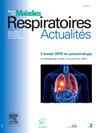2025年EGFR突变非小细胞肺癌的治疗算法
Q4 Medicine
引用次数: 0
摘要
EGFR突变仍然是非小细胞肺癌(NSCLC)中最常见的可靶向致癌驱动因素,在法国非吸烟者中占12%的腺癌和44%的NSCLC病例。“常见的”EGFR突变——外显子19缺失和外显子21 L858R突变——在89%的病例中被发现。新的分子生物学技术的使用已经导致了“罕见”EGFR突变的鉴定,特别是外显子20插入,并且还揭示了诊断和随访期间的分子异质性。这种异质性部分解释了EGFR酪氨酸激酶抑制剂(EGFR- tkis)疗效的可变性,并有助于耐药克隆的出现。多年来,奥西替尼一直是标准的一线治疗方法。然而,联合化疗的作用和amivantamab(双特异性EGFR-MET抗体)的出现正在改变一线治疗方案的格局,无论联合与否,以及治疗的顺序,目标是提高总生存率。然而,这些进步伴随着毒性的增加和生活质量受损的风险,强调需要仔细选择最有可能从每种治疗方案中受益的患者。最后,奥希替尼的适应症正在扩大,目前已被批准用于辅助术后治疗,并有望用于局部或局部晚期不可切除的NSCLC患者放化疗后的新辅助(术前)和巩固治疗。本文章由计算机程序翻译,如有差异,请以英文原文为准。
Algorithme thérapeutique en 2025 des cancers bronchiques non à petites cellules avec mutation de l'EGFR
EGFR mutations remain the most frequently observed targetable oncogenic driver in non-small cell lung cancer (NSCLC), accounting for 12% of adenocarcinomas and 44% of NSCLC cases in non-smokers in France. The «common» EGFR mutations—exon 19 deletions and the exon 21 L858R mutation—are found in 89% of cases. The use of new molecular biology techniques has led to the identification of «rare» EGFR mutations, particularly exon 20 insertions, and has also revealed molecular heterogeneity both at diagnosis and during follow-up. This heterogeneity partly explains the variability in the efficacy of EGFR tyrosine kinase inhibitors (EGFR-TKIs) and contributes to the emergence of resistant clones. Osimertinib has been the standard first-line therapy for several years. However, the role of combined chemotherapy and the emergence of amivantamab—a bispecific EGFR-MET antibody—are changing the landscape of first-line treatment options, whether in combination or not, as well as the sequencing of therapies, with the goal of improving overall survival.
These advances, however, come with increased toxicities and a risk of impaired quality of life, underscoring the need to carefully select patients who are most likely to benefit from each therapeutic option. Finally, the indications for osimertinib are expanding, with its use now approved in the adjuvant post-surgical setting and its anticipated arrival in neoadjuvant (pre-operative) and consolidation therapy after chemoradiation for patients with localized or locally advanced unresectable NSCLC.
求助全文
通过发布文献求助,成功后即可免费获取论文全文。
去求助
来源期刊

Revue des Maladies Respiratoires Actualites
Medicine-Pulmonary and Respiratory Medicine
CiteScore
0.10
自引率
0.00%
发文量
671
 求助内容:
求助内容: 应助结果提醒方式:
应助结果提醒方式:


